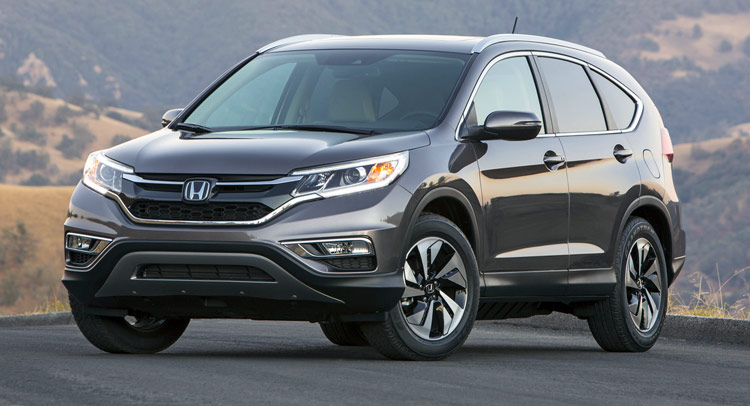A crossover vehicle is a type of automobile that combines the features of a sport utility vehicle (SUV) with those of a passenger car. crossovers are designed to look like SUVs, but they typically have better fuel economy and handle more like cars. The term “crossover” was first used in the early 1990s, and it has become increasingly popular in recent years.
A crossover vehicle is a type of automobile that combines the features of a passenger car with those of an SUV. They typically have unibody construction and tend to be more fuel efficient than SUVs. Many crossover vehicles also have a lower ground clearance than traditional SUVs, making them easier to get in and out of.

Credit: www.leithcars.com
What is the Difference between a Suv And a Crossover?
A crossover is a vehicle built on a car platform with some SUV-like features. A crossover has unibody construction, meaning the body and frame are integrated into one unit, as opposed to being separate units like in body-on-frame SUVs. This makes crossovers lighter and more fuel efficient than body-on-frame SUVs.
Crossovers also have better handling and ride quality than SUVs because they have a car platform. However, crossovers typically have the less towing capacity and ground clearance than SUVs. SUVs are built on a truck chassis with a body bolted on top.
This gives them great towing capacity and ground clearance but makes them heavier and less fuel efficient than crossovers. Because they’re built on a truck chassis, they also have poorer handling and ride quality than crossovers.
What is the Point of a Crossover Car?
A crossover car is a vehicle that combines the best features of both a passenger car and an SUV. Crossover cars typically have better fuel economy than SUVs, and they offer more interior space and cargo room than a standard sedan. Most crossovers also come with all-wheel drive, which is perfect for driving in snow or on other slippery surfaces.
What is an example of a Crossover Vehicle?
A crossover vehicle is a type of automobile that combines the features of a sport utility vehicle (SUV) with those of a passenger car. It is sometimes also called a CUV, or cross-utility vehicle.
One example of a crossover vehicle is the Toyota RAV4.
It has the body style of a passenger car, but it also has features that are typically found on an SUV, such as four-wheel drive and increased ground clearance.
What is Better a Crossover Or Suv?
A crossover is a vehicle that shares characteristics with both SUVs and sedans. A typical crossover has a unibody construction (as opposed to the body-on-frame construction of most SUVs), a transverse engine layout (as opposed to the longitudinal layout of most SUVs), and four-wheel drive capability. The term “crossover” was coined by Suzuki when they introduced the X90 in 1996, but it didn’t become popular until 2004 when Honda introduced the CR-V.
Crossovers are often lighter and more fuel-efficient than SUVs because of their unibody construction and transverse engine layout. They also tend to have better handling and ride quality than SUVs, thanks to their car-like platform. However, crossovers generally don’t have as much cargo space or off-road capability as SUVs.
So, which is better? That depends on your needs and preferences. If you’re looking for an efficient and comfortable daily driver with some extra space for cargo, a crossover might be the right choice for you.
If you need serious off-road capability or want to tow a large trailer, an SUV is probably a better option.
SUV vs Crossover – What’s The Difference?
Crossover Vs Suv
When it comes to choosing a vehicle, there are many factors to consider. But one of the most important decisions you’ll make is whether to choose a crossover or an SUV. Both have their pros and cons, so it’s important to understand the difference before making your final decision.
Let’s start with crossovers. Crossovers are typically smaller and more fuel-efficient than SUVs. They’re also easier to maneuver in tight spaces and offer a smoother ride on the road.
On the downside, crossovers don’t have as much cargo space as SUVs, so if you’re planning on taking long trips or carrying a lot of gear, an SUV might be a better option.
SUVs offer more space for passengers and cargo than crossovers. They’re also generally more capable off-road thanks to their four-wheel drive capability.
However, SUVs can be more difficult to handle on the road and consume more fuel than crossovers. So if you’re not planning on doing any serious off-roading, a crossover might be the better choice for you.
Ultimately, the decision between a crossover and an SUV comes down to your personal needs and preferences.
If you need lots of space for passengers and cargo or plan on doing some serious off-roading, an SUV is probably the way to go. But if you’re looking for something smaller and more fuel-efficient that’s still capable of handling light off-roading duties, a crossover would likely be your best bet.
Conclusion
A crossover vehicle is a type of automobile that combines the features of a passenger car with those of a sport utility vehicle (SUV). They typically have unibody construction, which makes them lighter and more fuel-efficient than traditional SUVs. In recent years, crossovers have become increasingly popular due to their versatility and practicality.